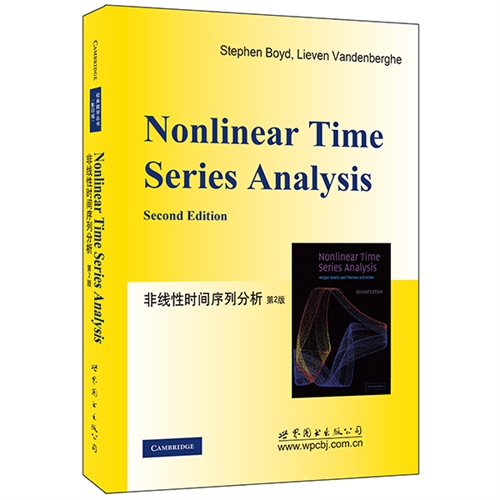- ISBN:9787510087721
- 装帧:一般胶版纸
- 册数:暂无
- 重量:暂无
- 开本:16开
- 页数:369
- 出版时间:2015-03-01
- 条形码:9787510087721 ; 978-7-5100-8772-1
本书特色
本书旨在以动力系统理论为基础,阐述时间序列分析的现代方法。这部修订版,增加了一些新的章节,对原版进行了大量的修订和扩充。从潜在的理论出发,到实际应用话题,并用众多 领域收集来的大量经验数据解释这些实用话题。本书对研究时间变量信号的各个领域包括地球、生命科学科学家和工程人员都十分有用。 目次:基本话题:导论;线性工具和一般考虑;相空间方法;确定论和可预测性;不稳定性:lyapunov指数;自相似性:当决定论是弱的时候非线性方法的应用;非线性线性精选;高等话题:高等浸入式方法;混沌数据和噪音;更多有关不变量;模型和预测;非平稳信号;耦合和非线性系统综合;混沌控制。a:tisean程序应用;b:实验数据集合描述。 读者对象:数学、生命科学、经济等众多实践应用领域的科研人员。
内容简介
本书旨在以动力系统理论为基础,阐述时间序列分析的现代方法。这部修订版,增加了一些新的章节,对原版进行了大量的修订和扩充。从潜在的理论出发,到实际应用话题,并用众多 领域收集来的大量经验数据解释这些实用话题。本书对研究时间变量信号的各个领域包括地球、生命科学科学家和工程人员都十分有用。 目次:基本话题:导论;线性工具和一般考虑;相空间方法;确定论和可预测性;不稳定性:Lyapunov指数;自相似性:当决定论是弱的时候非线性方法的应用;非线性线性精选;高等话题:高等浸入式方法;混沌数据和噪音;更多有关不变量;模型和预测;非平稳信号;耦合和非线性系统综合;混沌控制。A:TISEAN程序应用;B:实验数据集合描述。 读者对象:数学、生命科学、经济等众多实践应用领域的科研人员。
目录
作者简介
Holger Kantz(H.坎兹,德国)是国际知名学者,在数学和物理学界享有盛誉。本书凝聚了作者多年科研和教学成果,适用于科研工作者、高校教师和研究生。
-

勒维特之星-大发现系列丛书
¥6.4¥16.0 -

喜马拉雅山珍稀鸟类图鉴
¥31.3¥68.0 -

昆虫的生存之道
¥12.2¥38.0 -

昆虫采集制作及主要目科简易识别手册
¥25.0¥50.0 -

古文诗词中的地球与环境事件
¥8.7¥28.0 -

声音简史
¥21.3¥52.0 -

不匹配的一对:动物王国的性别文化
¥16.7¥42.8 -

现代物理学的概念和理论
¥27.9¥68.0 -

物理学之美-插图珍藏版
¥29.0¥69.0 -

技术史入门
¥25.0¥48.0 -

宇宙与人
¥10.5¥35.0 -

几何原本
¥35.6¥93.6 -

袁隆平口述自传
¥19.9¥51.0 -

星空探奇
¥14.0¥39.0 -

改变世界的发现
¥15.4¥48.0 -

图说相对论(32开平装)
¥23.9¥46.0 -

80种昆虫彩图馆
¥16.3¥39.8 -

数学专题讲座
¥13.3¥29.0 -

光学基础教程
¥20.8¥63.0 -

布尔巴基-数学家的秘密社团
¥12.2¥38.0













